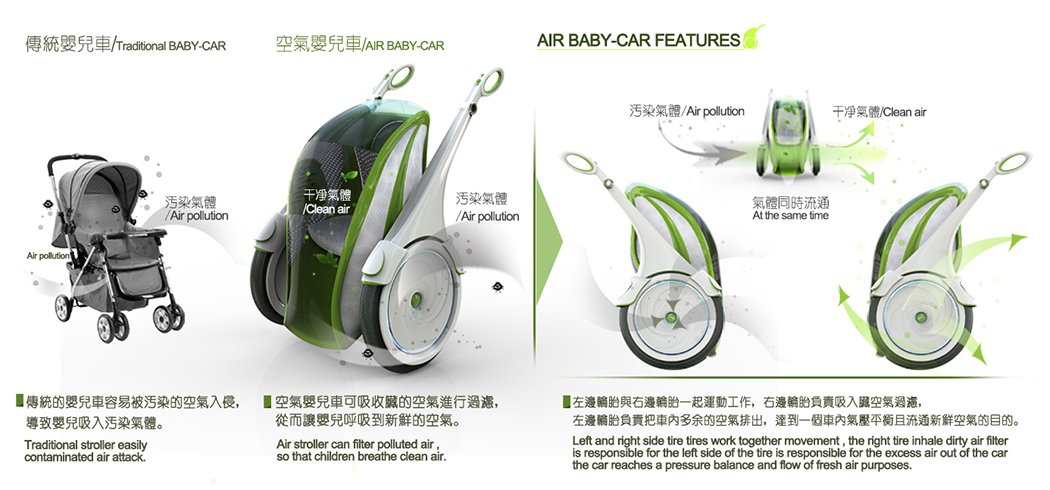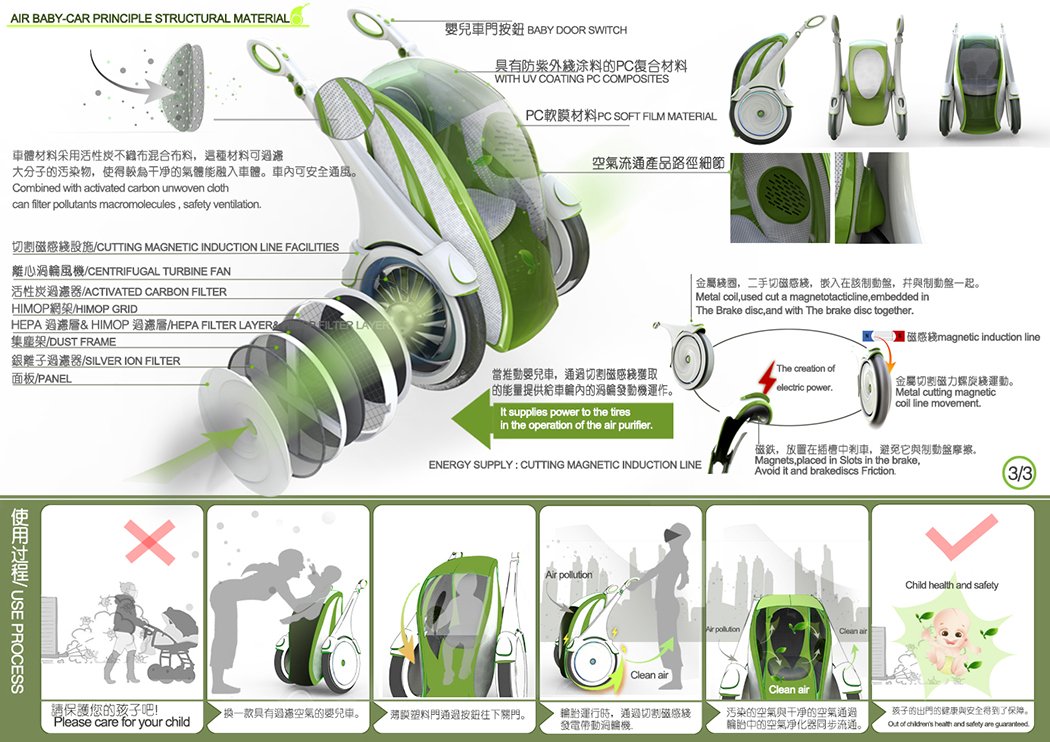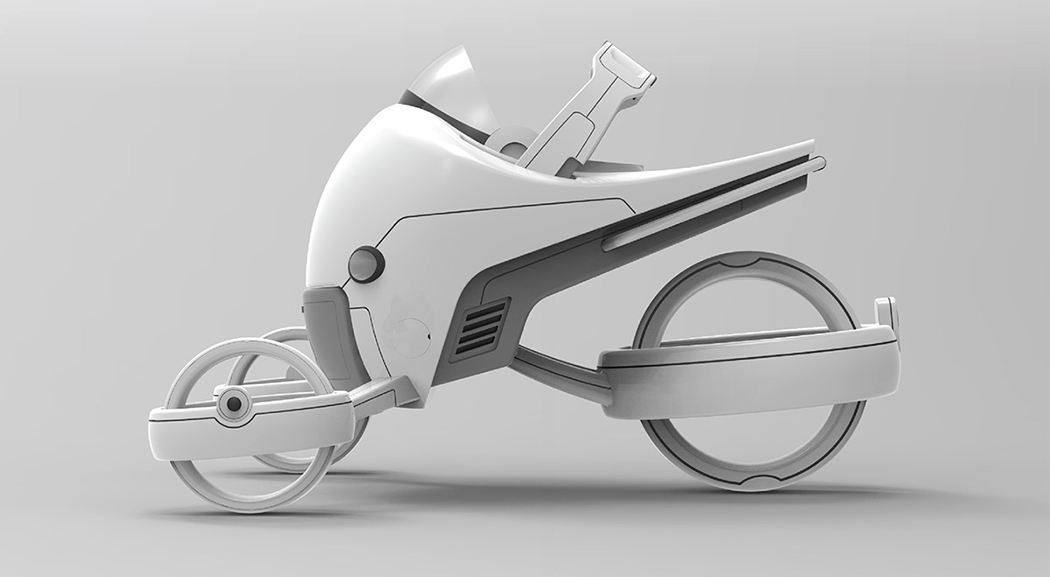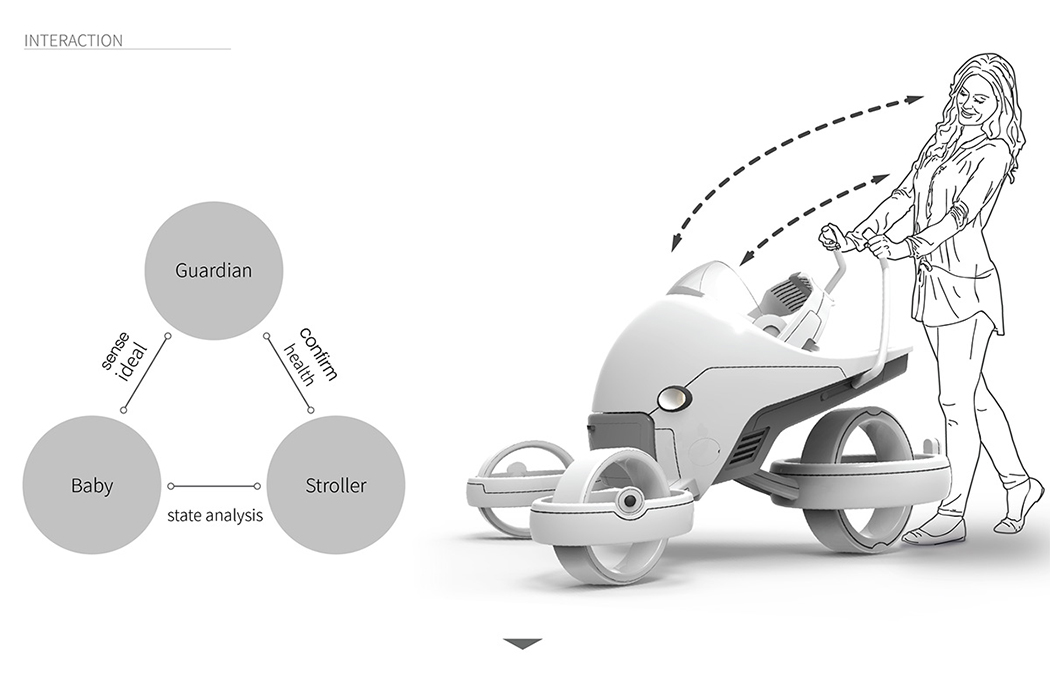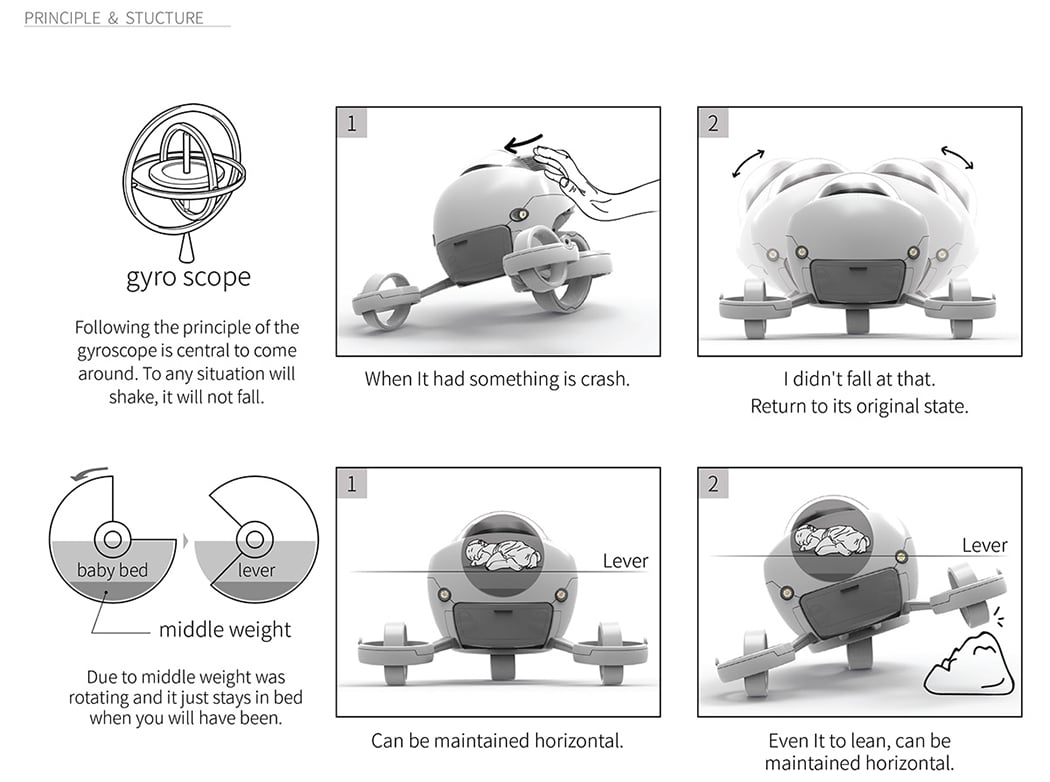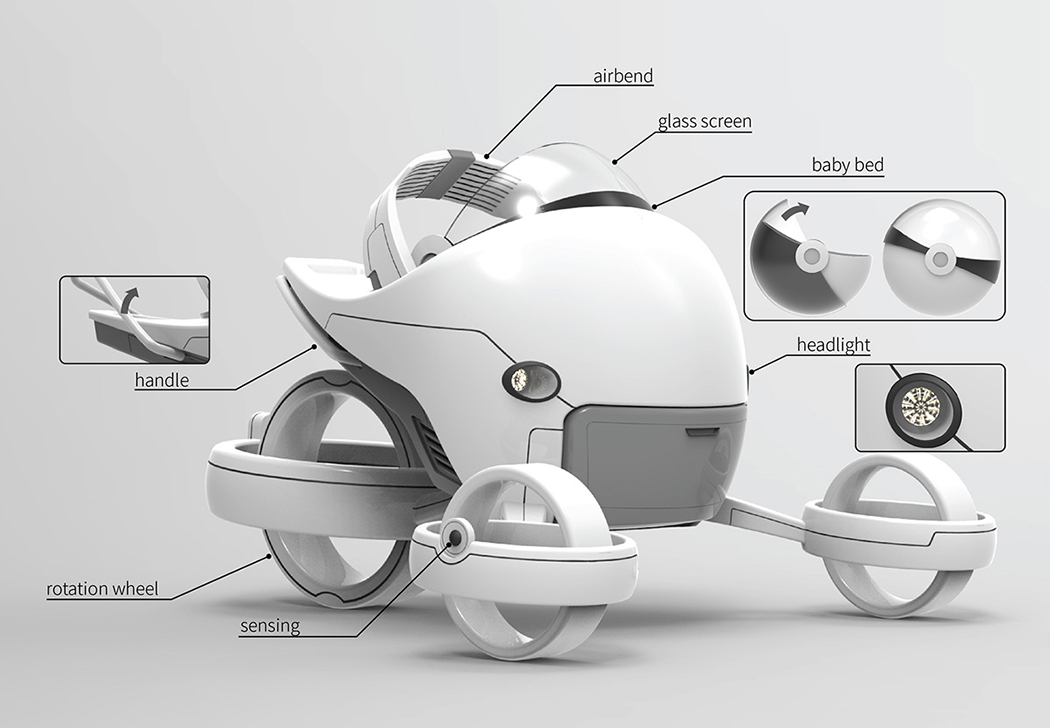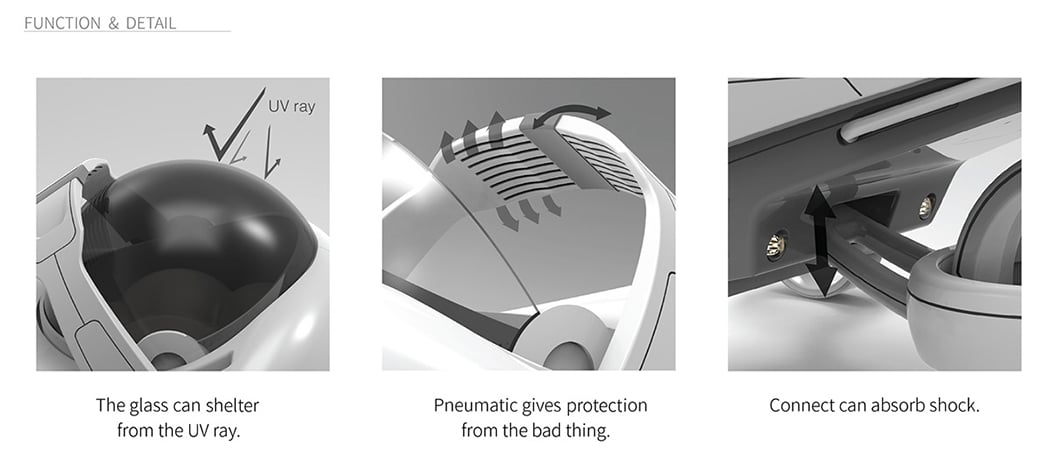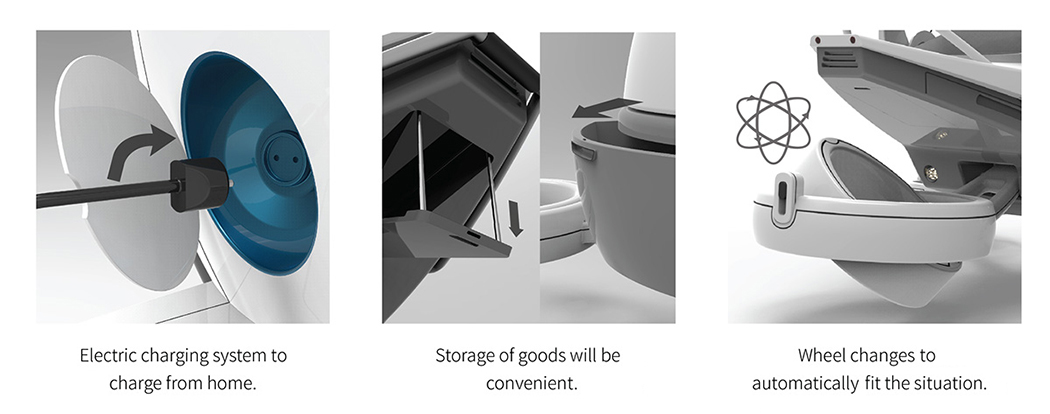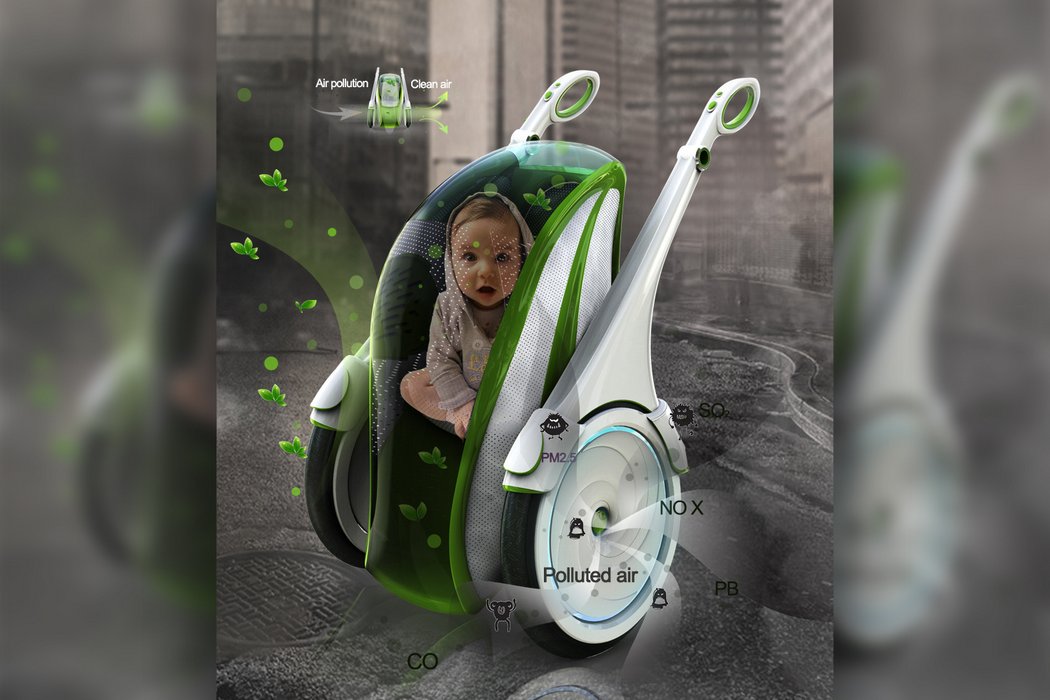
I can only hope that we don’t destroy the earth to an extent that would render air unbreathable, but it seems like it’s an approaching reality. The Air Baby-car is a conceptual baby pram that creates a protective pod around the baby, while allowing the left and right wheels to be inlets and outlets for air respectively. The Air Baby-carriage houses an air purifying unit that gets working on the air that enters through the inlet, so the air your baby breathes is free of contaminants… something that is essential for little children, given how low their immunity is at that age. Not only does the air entering teh pram get purified, the air exiting the outlet is purified too, so that the parent in turn breathes uncontaminated air! Who thought one pram could play such a large role in a family’s well-being?!
Designers: Huang-yiqi, Liu-yiqi, Zheng-yonghao, Zhao-bingcong and Zhou-junbin.
